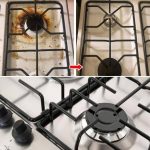ADVERTISEMENT
Mark Meshulam of Chicago Window Expert sheds light on the matter: “There are two scenarios of why oven glass can break spontaneously.” He explains that soda lime glass, commonly used in oven doors, isn’t as tolerant of rapid temperature changes compared to borosilicate glass. This shift in glass type has contributed to an increase in such incidents.
However, it’s also probable that these explosions stem from a nickel sulfide inclusion, an extremely small flaw within the glass. “It’s only about a tenth of a millimeter in diameter. That little ball has some peculiar properties,” Meshulam explained, further adding, “over time, it’s struggling to escape. And sometimes, a high-heat event like oven cleaning can trigger the final spontaneous failure that was already present.”
Nonetheless, Meshulam offers reassurance regarding the safety of oven self-cleaning features. “Most people will go their entire lives using the self-cleaning feature without encountering this issue,” he remarked. He also suggests that microscopic chips and flaws are often the culprits behind oven explosions when they are not in use. However, what’s particularly alarming about this scenario is that the door can shatter long after the initial damage occurs.
Tips for Prevention
While some of these tiny points of damage may occur during production, shipping, or installation, homeowners can take steps to minimize damage at home. For instance, certain common habits can lead to microscopic scratches or chips on the glass. These include using aggressive cleaning techniques and subjecting the glass to excessive physical impact.
ADVERTISEMENT




